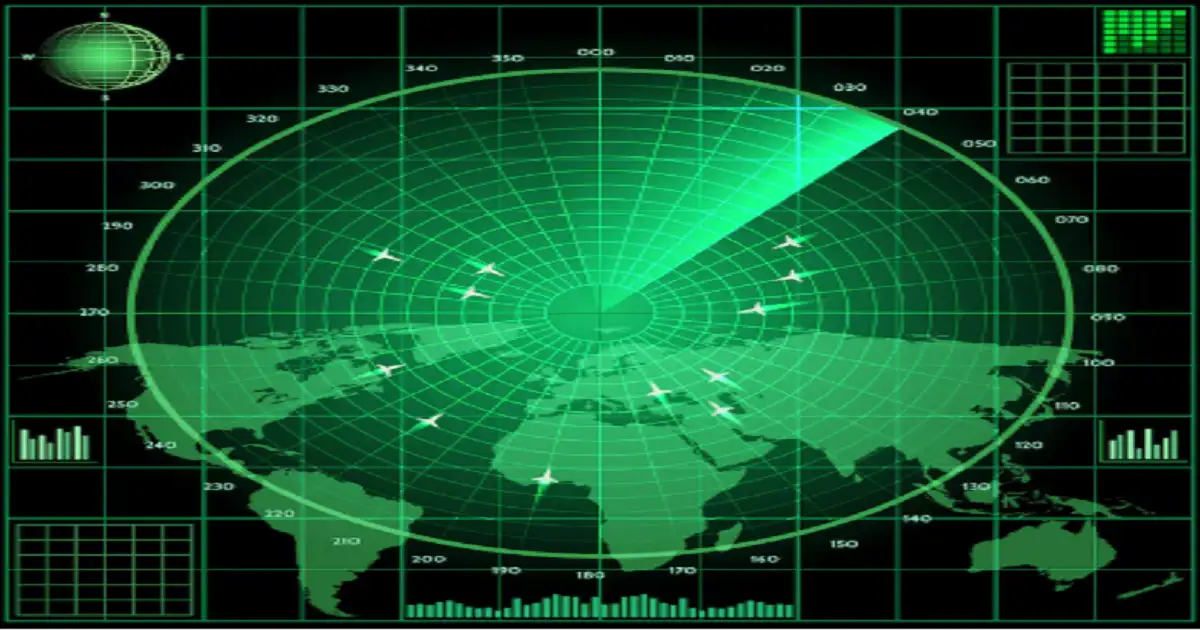Introduction to radar
Radar is a technology that uses electromagnetic waves to detect the position, speed and other characteristics of target objects. There are the following types of radars depending on the operating frequency and band.
| Radar type | Frequency range | Wavelength range | Application area |
| Low frequency radar | 3 MHz – 30 MHz | 10 m – 100 m | Ground Penetrating Radar (GPR), long distance communications |
| High frequency radar | 30 MHz – 300 MHz | 1 m – 10 m | Ground penetrating radar, ocean monitoring |
| VHF radar | 300 MHz – 3 GHz | 10 cm – 1 m | Aviation navigation, weather radar |
| UHF radar | 3 GHz – 30 GHz | 1 cm – 10 cm | Aviation navigation, weather radar |
| Microwave radar | 30 GHz – 300 GHz | 1 mm – 1 cm | Autonomous driving, security monitoring, industrial automation |
| Millimeter wave radar | 30 GHz – 300 GHz | 1 mm – 1 cm | Autonomous driving, security monitoring, industrial automation |
| Submillimeter wave radar | 300 GHz – 3 THz | 0.1 mm – 1 mm | High-resolution imaging, scientific research |
| Infrared radar | 3 THz – 400 THz | 0.75 µm – 0.1 mm | Thermal imaging and night vision equipment |
| Visible light radar | 400 THz – 750 THz | 400 nm – 750 nm | Optical imaging, LiDAR |
| Ultraviolet radar | 750 THz – 30 PHz | 10 nm – 400 nm | High energy physics research, astronomical observation |
| X-ray radar | 30 PHz – 30 EHz | 0.01 nm – 10 nm | Medical imaging, material analysis |
| Gamma ray radar | > 30 EHz | < 0.01 nm | Nuclear physics research, astronomical observation |
1 .What is millimeter wave radar?
Millimeter wave radar is a technology that uses millimeter wave band electromagnetic waves (frequency range is 30GHz to 300GHz, wavelength is 1mm to 10mm) for detection and measurement.
2 .The composition of millimeter wave radar
1) Antenna: used to receive and send millimeter wave signals. Attention should be paid to the design of the antenna, which directly affects the performance of the radar system.
2) Transmitter: used to generate and transmit millimeter wave signals. The transmitter generally also contains components such as signal generators and power amplifiers.
3) RF transceiver switch: used to switch the radar system’s transceiver status
4) Receiver: receives and processes the reflected millimeter wave signal. It generally also includes components such as low noise amplifiers (LNA), mixers and analog-to-digital converters (ADC)
5) Signal processing unit: the main work is to process and analyze the received signal, including digital signal filtering, data demodulation and target detection, and send the processed data to the display
6) Display: mainly for graphical display of data, etc.
3 .Working principle of millimeter wave radar
The following figure shows the working process of the entire millimeter wave radar.
1) Transmitting signal: The radar system first sends out a millimeter wave signal.
2) Signal propagation: During the signal propagation process, when the millimeter wave signal encounters the target object, reflection, scattering or refraction will occur.
3) Receiving signal: The radar system antenna captures the reflected millimeter wave signal and transmits the corresponding signal to the receiver for signal processing.
4) Signal processing: The receiver processes the received signal, calculates the time delay, signal strength and phase change of the signal, and determines the distance, speed and shape of the target object.
5) Control display: The processed data is displayed to the end user through the control and display unit, providing corresponding image data, etc.
In general, the millimeter wave radar system is initiated by the transmitter, and the signal is sent out through the antenna. After the signal encounters the target object, part of the signal is reflected back and captured by the radar antenna. The captured data is fed back to the receiver, and then to the signal processing unit for data processing, and finally presented by the display terminal.
4 .Application fields of millimeter wave radar
Compared with traditional microwave radar, millimeter wave radar has a higher frequency and shorter wavelength, so it can provide higher resolution and more accurate detection capabilities. This makes millimeter wave radar perform well in various applications, including autonomous driving, industrial automation, security monitoring and health monitoring.
1) Autonomous driving: millimeter wave radar is used in autonomous driving cars to detect obstacles, vehicles and pedestrians ahead, and realize real-time distance measurement and anti-collision warning.
2) Industrial automation: In industrial production, millimeter wave radar is used to monitor the position and movement status of objects on the production line to improve production efficiency and safety.
3) Security monitoring: It can be used to detect and track intruders, and provide high-precision perimeter protection and security monitoring.
4) Health monitoring: It can be used for contactless monitoring of human vital signs, such as breathing rate and heartbeat, and is particularly suitable for hospital and home health monitoring.
5 .Advantages and disadvantages of millimeter wave radar
Advantages:
1) High resolution: high frequency and low wavelength enable it to provide high-resolution target images and accurate distance measurement
2) All-weather operation: It can work in various severe weather environments.
3) Penetration: It has the ability to penetrate some non-metallic materials. Such as plastics, cloth, etc.
4) High detection accuracy
Disadvantages:
1) High cost
2) Complex signal processing: certain requirements for processors, system design and implementation
3) Electromagnetic interference: when working in high frequency bands, it is susceptible to electromagnetic interference from other devices.
Conclusion
As an advanced detection technology, millimeter wave radar has important application value in various fields. With the advancement of science and technology, the continuous increase in application needs, and the advancement of intelligence and integration, millimeter wave radar technology will have a broader application scenario in the future

